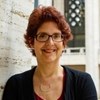Article
Published: 03 Apr 2024
Why opera is flourishing in Los Angeles
This article was published in the Spring 2024 issue of Opera America Magazine.



In 2010, the last time the OPERA America conference was held in Los Angeles, Long Beach Opera’s production of Ricky Ian Gordon’s Orpheus and Eurydice, staged in a swimming pool, was a featured event. This June, when OPERA America returns to LA, running back-to-back with the World Opera Forum, more than half a dozen companies will be presenting projects — a testament to the vigorous operatic ecosystem that has exploded in the City of Angels in recent decades.
This article was published in the Spring 2024 issue of Opera America Magazine.

Heidi Waleson
Heidi Waleson is The Wall Street Journal’s opera critic and the author of Mad Scenes and Exit Arias: The Death of New York City Opera and the Future of Opera in America.
Unlock the full benefits of membership by clicking the link below.
OR
Login failed. Please try again.